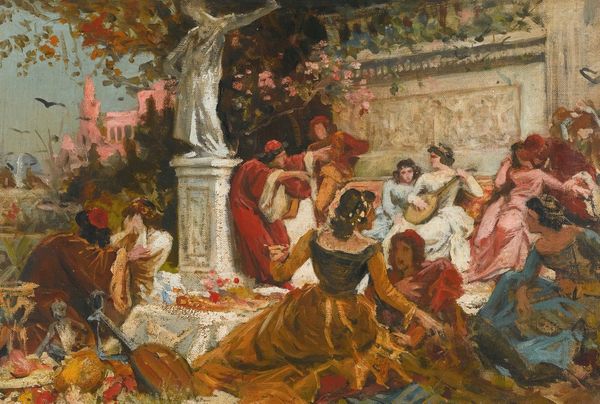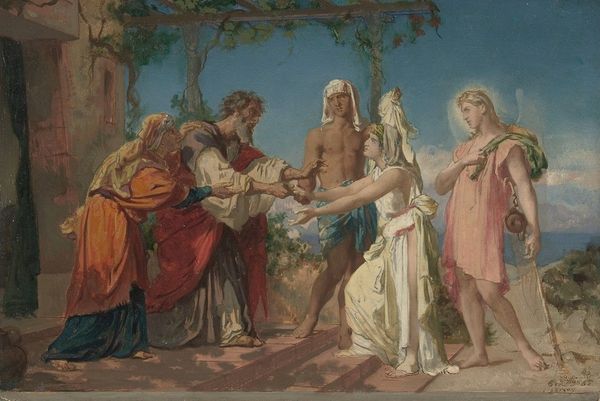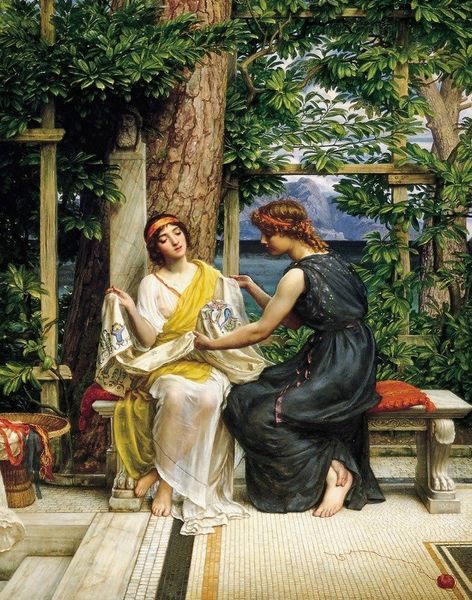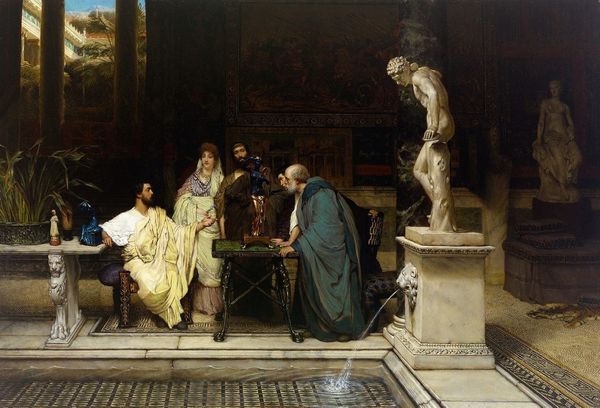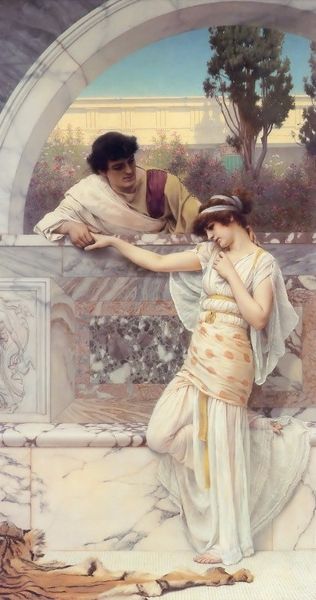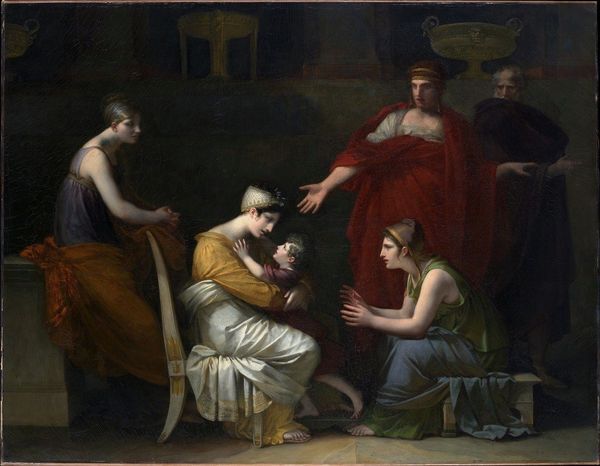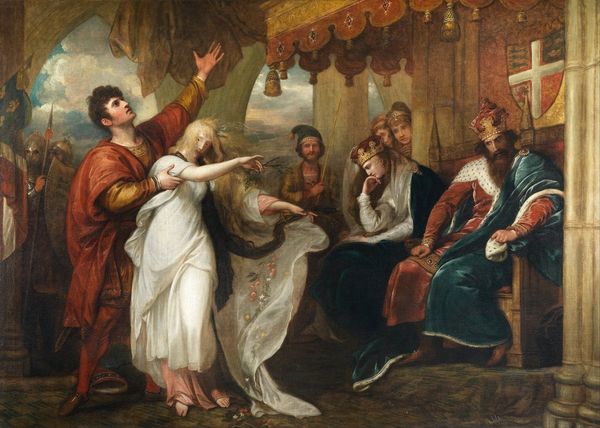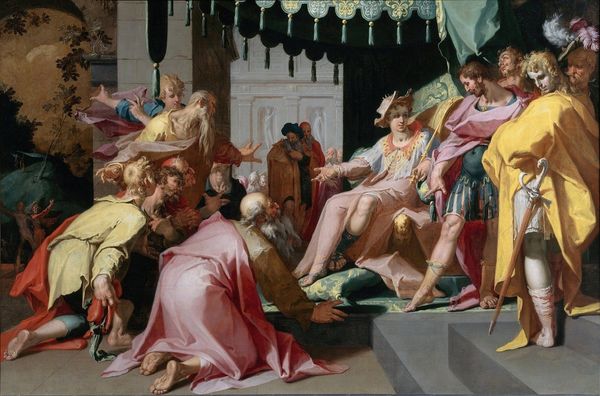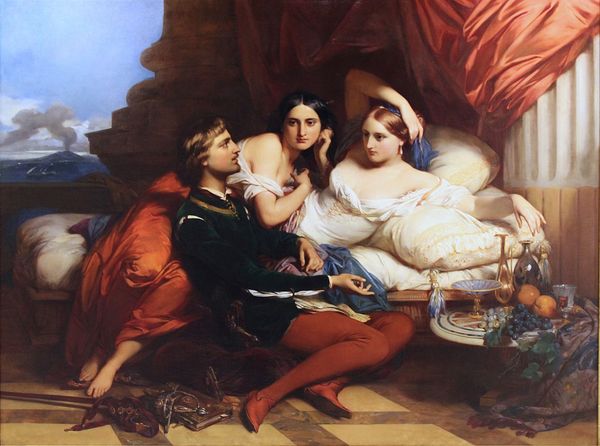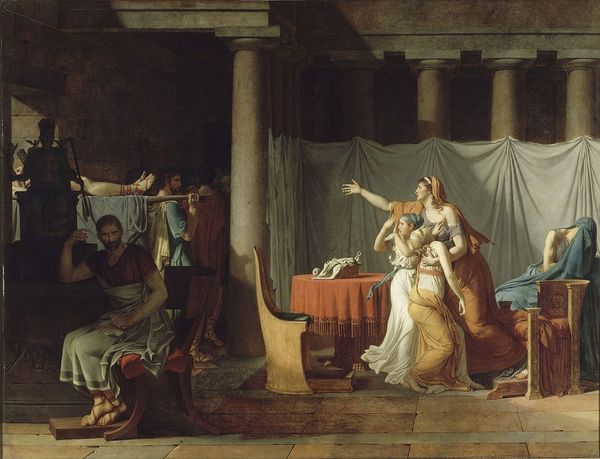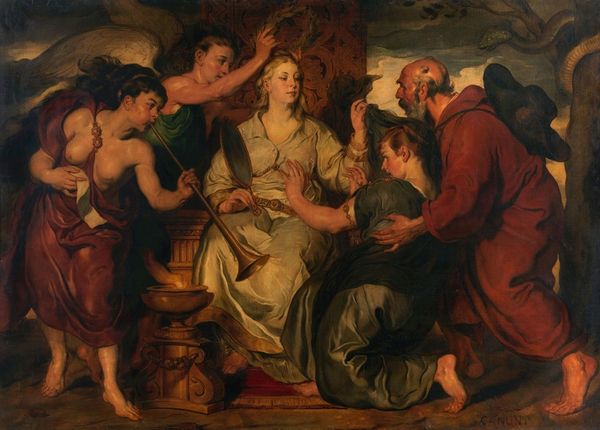
Copyright: Public Domain: Artvee
Editor: This is Alexandre Cabanel’s “Florentine Poet,” an oil painting from 1861. The composition strikes me as intimate, yet theatrical. There are several figures, all seemingly caught in their own reverie, or perhaps listening to the poet. What catches your eye in this piece? Curator: You know, it's as if Cabanel plucked us from our humdrum lives and dropped us right into a Boccaccio story. The air is thick with unspoken emotions, the light soft and suggestive, almost whispering secrets in your ear. But look closer—do you sense a slight artificiality in the arrangement, a tableau vivant carefully constructed? Editor: I do see it, now that you mention it. It's like they are posing. Curator: Precisely! It's the Romantic era's fascination with the past filtered through a contemporary lens, a longing for simpler times maybe, but ultimately a constructed vision. Notice the details – the costumes, the idealized faces, the very way they are arranged in space. It's beautiful, undoubtedly, but it's also a performance. A beautiful and delicate, but a staged performance. I love how that tension enlivens the artwork! Editor: That tension definitely gives me a new appreciation for the artwork. It seems both heartfelt and contrived at once. It gives one a lot to reflect upon. Curator: Yes, exactly! The beauty of art is that it is an illusion. An extremely elaborate trick which becomes all the more beautiful because of it.
Comments
No comments
Be the first to comment and join the conversation on the ultimate creative platform.
